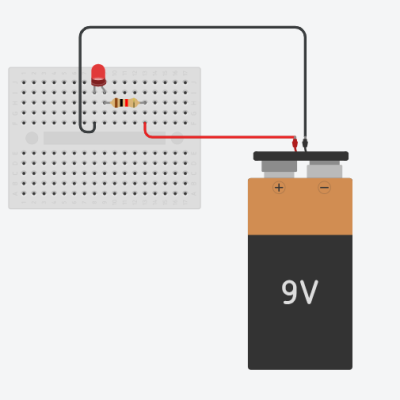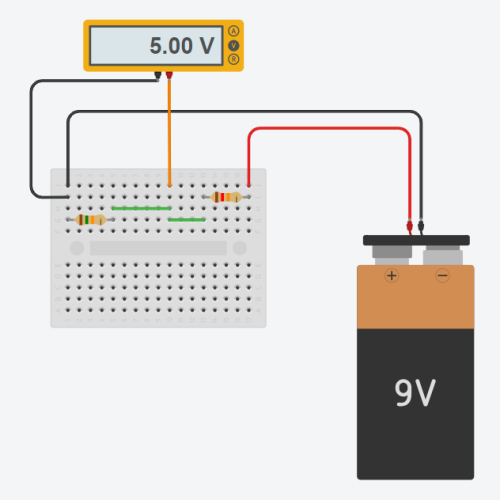For Best Experience, View on Desktop/Laptop !

Consider 2 situations. For the first case, suppose that you are running freely on an open ground and for the second case, consider yourself running on Mumbai local station (that too, at the peak working time). Immediately, you will notice that you can’t run that freely in the second case. What’s the reason ?
Resistance. The crowd on the railway station acts like an obstruction for you while you try to run. Similar obstruction is felt by those tiny electrons while moving from the conductor. We term this difficulty for the electrons to flow due to object’s opposition as ‘Resistance‘
Topics Covered :
- What factors affect Resistance ?
- Use of Resistors in circuit (*Imp)
- Types of Resistors and Resistor colour coding
- Power Ratings
1. What factors affect Resistance ?

Material :
- Materials which are good conductors allow easy flow of electrons through them since the nucleus in the atoms don’t influence the valence electrons much due to which they get easily detached from the atoms and contribute to the current. (Imagine atoms of conductors as not-so-strict parents).
- On the other hand, we have insulators which don’t allow the electrons to flow freely. This is due to very strong influence of the nucleus on the valence electrons and because of this, the electrons are tightly bounded to atoms. (Imagine atoms of insulators as very strict parents)


We refer to this property of material as ‘Resistivity‘.It is basically a characteristic of the material. So, conductors have lower resistivity as compared to insulators since they offer lesser resistance to electron flow for a given volume.
Cross-sectional Area :
- From our daily life experiences, we know that driving on a broad highway feels much more free as compared to driving on a narrow road. Because of which, the first thing we try to do on highway is to speed up our vehicle. On similar basis, when the area of cross section of a wire is more , lesser is the resistance, hence, making electron flow easier.

Length :
- More the length of wire/object implies that more atoms/molecules will interact with the electrons, hence increasing the obstruction. So, Resistance is high in this case
Taking into account all the above 3 factors (Material, Cross-sectional Area and length), we can compress it into a formula as :

Question : We have a quick question over here now. Have a look at it !!

Solution :
Important to Note :
In the formula of R, rho is the resistivity, L is the length (along the current direction) and A is the area of cross-section (current passes through this section of area while passing)
CASE-1 :


CASE-2 :


CASE-3 :


Temperature :
Usually in normal cases, as the temperature increases, the resistance is seen to be increased. There is also a relationship between the resistance and the temperature.

Cross-sectional Area :
2. Use of Resistors in Circuits :
Ok, so now coming to the main portion : what is the actual use of resistor in any electronic circuit !? Answering this question, there are 2 main uses of resistor :
- Limiting the current
- Controlling the voltage
Limiting the current :
Resistors are commonly used to make sure that only the current required by the device goes into it, nothing more ! Getting excess current than required can damage the devices very badly (i.e. it might even make them burned off. This happens mostly with sensitive elements like LEDs, ICs, transistors, etc.)
Let’s consider a problem
Suppose that you need to make an red LED glow with the help of a 9V battery. So, shall we just directly connect the 9V battery to LED ? What happens if we do that !?


Before Simulation (for connections) Fig.1 After Simulating (LED burns)
Basically, if we directly connect battery to the LED, there is a lot of current flowing through the LED which causes it to ‘burn’. Excessive current to the sensitive components fries them up !! So, what’s the solution for this ?
- Just add the appropriate resistor with the LED. This resistor will take care that only the sufficient amount of current is made to be passed from LED
How to decide the resistance value ?
For the problem, we have :
- A 9V battery
- Red LED (maximum safe current – 20mA & forward voltage drop of 2V)
Note :
Every component does a voltage drop when current passes through them. For LED, we call it as ‘forward voltage drop’. The word ‘forward’ comes due to the reason that the diode only allows current to flow in one direction due to which the voltage drop will also happen in forward direction only.

Now, for the analysis part :
Our main aim is to find the value of ‘R’. We are considering 20mA current to be flowing in the circuit because it’s the maximum current which can pass safely from LED and give max. brightness.

Consider the loop ABCDA,
(To know more about Kirchhoff Laws and how to use them from basics, refer this article) – Tackle Circuits using Kirchhoff’s laws

Note :
The voltage drop across different colour LED is different . This is because, they emit different colours as well. The following table gives the data about the voltage drops across different colour LEDs :

So, this is how we limit the current using the resistor hence protecting our sensitive components from getting damaged !!
Controlling the Voltage :
Another very important use of Resistors is to control the voltage at a region/point in the circuit.
Let’s take an example
Suppose that you have a mini-circuit designed which needs 5V supply to work/operate. And again you are having my 9V battery itself. So it’s obvious that you can’t directly give the 9V supply to the mini-circuit. It would blow-up !!
Solution : To tackle this problem, we can design a voltage-divider circuit.
Consider the loop ABCDA
- In the circuit below, our main aim is to get 5V at ‘H’
- So, we need a resistor which can make a voltage drop of 4V. But this alone resistor won’t serve the purpose as for a complete loop, sum of potential differences should be zero. (KVL)
- Basically we need one more resistor which can do the voltage drop of remaining 5V

Analysis of Circuit :
Let current in the circuit be ‘i’

- With this circuit, we have created an outlet pin from where 5V can be used as the power source for the mini-circuit !!

Fig. Actual Connections in reality
3. Types of Resistors :

Fixed Value Resistor :
These resistors have their values fixed from the manufacturers itself. But there can be a slight deflection from the value. We call this deflection as ‘tolerance’.

Fig. Fixed Value resistor

How to Calculate total Value of Resistor ? – (Colour Coding)
- The first band gives first digit
- The second band gives second digit
- Third band gives the multiplier (the power raised to base 10)
- Fourth band gives you the tolerance value

So, for the above example, the colour coding will be like :
- First band – Orange
- Second band – Green
- Third band – Red
- Fourth band – Silver

Fig. Colour Coding for Fixed Resistors
Variable Resistors :
- Resistors, whose value can be altered are known as Variable Resistors. The manufacturer just prints the maximum value which the device can go up to. (For example, if 10K is printed on a potentiometer, it implies that you can adjust it’s resistance at any value from 0 to 10K ohms).
- The way you can vary the resistance changes from component to component

4. Power Rating of Resistors :
We have learnt about choosing the value of Resistance but whenever current passes through resistors, there is some heat generated as well. Now, we need to take care that this heat doesn’t damage the resistor. For this, we have power ratings assigned to resistors. Power is basically heat generated per second and is measured in Watts (W)
- There is a relation of power with Voltage and Current ,
P = V x I
Here, P is the Power (in W)
V is the potential difference across the resistor
I is the current flowing through the resistor
- There are resistors available of 1/8 watt, 1/4 watt, 1/2 watt, 1 watt, etc. More the size of resistor, the more power rating it has !
Example :

From the above example, we can infer that resistor of 1/8 W is ‘just’ sufficient. But to ensure even more safety, we can go with 1/4 W resistor as well !!
Conclusion :
Through this article, we tried to learn about Resistor and how do the basic analysis of the circuits involving resistors. According to me, understanding electronics right from the root will be really beneficial.
Learning to deal with Resistors, Capacitors, Inductors, IC’s help us to build the reasoning behind circuit design.
In the coming articles, Combination of Resistors and various techniques to solve them will also be discussed (like symmetry, etc) – UPLOADED
Till then, Keep Learning !!
All the Best !!


